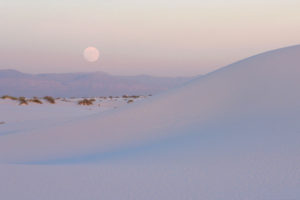
It’s easy to talk about science or its history in the abstract, especially when you’re thinking about long stretches of time, and to lose sight of what it means to actually do science. So I thought I’d share a video that shows scientists out doing field work.
In “Sundrops and Hawk Moths,” episode 4 of the series Plants Are Cool, Too!, host Chris Martine of Bucknell University talks with Krissa Skogen of the Chicago Botanic Garden. Skogen studies native pollinators (pollinators other than honeybees, basically), and the video shows her at work at the White Sands National Monument in New Mexico. She’s looking at the interaction between the hawk moth and some primrose species at White Sands.
It’s a cool video. I’d never seen anyone unroll a moth’s proboscis and collect pollen from it, and I didn’t know that you could gather the scent from a single flower and compare it with the scent from other flowers. One of the interesting things about the moths is that they cover much greater distances than bees and don’t have any kind of a home to return to. The most evocative line in the whole video was the one about moths spreading the genes of these plants around. Not to mention that White Sands is a magical setting. Enjoy!
My son, Patrick Alexander, Postdoctoral Curator at the NMSU Department of Biology Herbarium, helped with the production of this film.